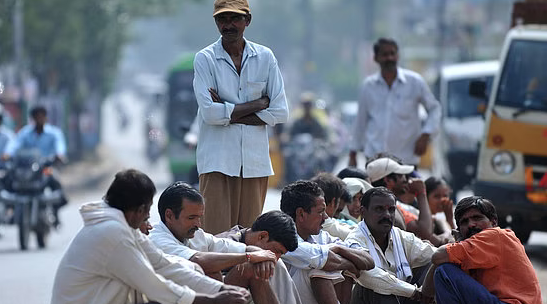Fund utilization data for the first ten and a half months of the financial year 2022-23 show that several important welfare schemes of the Ministry of Labour and Employment, Government of India, were lagging far behind expectations due to poor utilization of funds. This data is available up to 13 February 2023.
For Labour Welfare Scheme the Budget Estimate (BE) or original allocation in 2022-23 was Rs 120 crore but the actual expenditure up to 13 February was only Rs 36 crore. The allocation for 2023-24 at Rs 75 crore is also less than the previous year.
In the case of the National Data Base of Unorganized Sector Workers, the BE for 2022-23 was Rs 500 crore but only 120 crore was utilized. The BE for 2023-24 at Rs 300 crore is also lower than the previous year.
An important scheme called Atmanirbhar Bharat Rozgar Yojana was allocated a sum of Rs 6,400 crore but actual expenditure up to 13 February 2023 was only Rs 4,188 crore while the allocation for 2023-24 is very low at Rs 2,272 crore.
In the case of an important social security scheme called Pradhan Mantri Shram Yogi Man Dhan Yojana Rs 350 crore was allocated but the actual expenditure in the first 10 months was only Rs 93 crore.
A sum of only Rs 10 crore was allocated for Rehabilitation of Bonded Labor but the spending was lower still at Rs 4.8 crore.
There is need for much more work to be taken up aimed at reducing occupational health problems
For the National Pension Scheme for Self-Employed Persons and Shopkeepers a sum of Rs 50 crore was allocated but just a token sum of Rs 2 lakh was spent. In the next year 2023-24 also there is an allocation for only Rs 3 crore.
This shows that due to under-utilization several important schemes for the working class have been adversely affected. Remedial action should be taken in the very near future in this context.
The Ministry of Labor and Employment is one of the most important ministries of India with very important responsibilities. Its resource allocation should also be much higher as important new initiatives also have to be taken.
To give just one example there is need for much more work to be taken up aimed at reducing occupational health problems including occupational diseases and accidents which have been a source of immense distress for a very large number of workers. There are new challenges for many sections of workers
who will be more vulnerable to climate change and global warming.
Keeping in view these and other factors there is a clear need for higher resource allocation and improved utilization.
*Honorary convener, Campaign to Save Earth Now. His recent books include ‘Protecting Earth for Children’ and ‘Man over Machine (Gandhiji’s Legacy)’. Data source: 41st report (2022-23), 17th Lok Sabha, of the Standing Parliamentary Committee on Labor, Textiles and Skills Development (report for the Ministry of Labor and Employment)
Courtesy: Counterview

